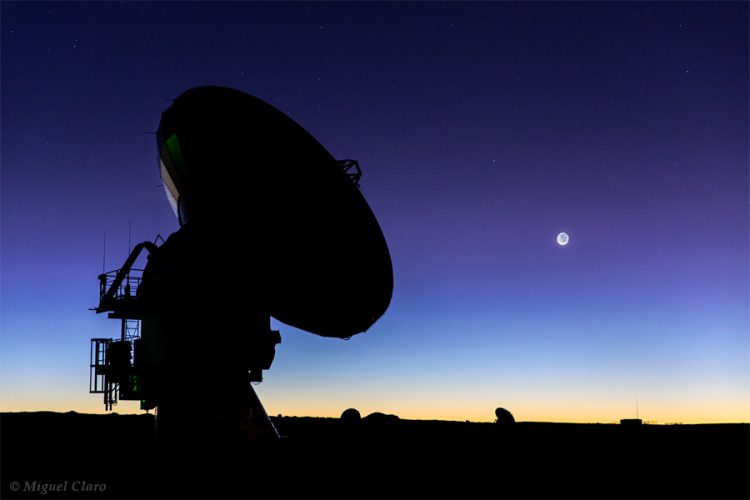ALMA and Crescent Moon
Description
After the sunset begins the nautical twilight and the sky is painted with a beautiful pallet of blueish and orange colors, with the gentle appearance of brighter stars. This effect is ultimate on high altitudes like here 5000 meters high on Chajnantor plateau in northern Chile, with the crescent moon over one of the antennas in the Atacama Large Millimeter/submillimeter Array (ALMA). The 12-meter wide dish is pointing to a cold far place in the Universe. The antenna is one of 66 in the ALMA array. The giant antennas are portable and can spread to an area of 16 km wide in order to simulates a giant single telescope with ultimate angular resolution.
ALMA is an astronomical interferometer of radio telescopes in the Atacama desert. A high and dry site is crucial to millimeter wavelength operations. Observing at wavelengths of 0.32 to 3.6 mm, ALMA is expected to provide insight on star birth during the early universe and detailed imaging of local star and planet formation. Light at these wavelengths comes from vast cold clouds in interstellar space, at temperatures only a few tens of degrees above absolute zero, and from some of the earliest and most distant galaxies in the Universe. ALMA is the most powerful telescope for observing the cool Universe — molecular gas and dust. The 66 antennas can be arranged in different configurations, from a compact cluster of only 150 meters to 16 km wide, which provide astronomers a variable “zoom”.

comments (0)